 |
Gyumri's Holy Savior Church held a prayer service for the Primate of the Shirak Diocese, Archbishop Michael
An evening service and joint prayer were held at the Holy Savior Church in Gyumri on the occasion of the 26th anniversary of the leadership of the Primate of the Shirak Diocese, Archbishop Michael Ajapahyan. In 2001, His Holiness Karekin II, Catholicos of All Armenians, ordained Archbishop Michael and appointed him Primate of the Shirak Diocese. The service was held in the absence of His Holiness. On October 3, the court sentenced him to 2 years in prison.
|
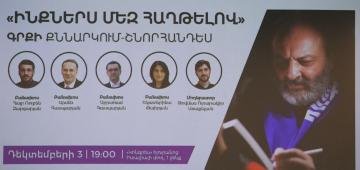 |
A discussion-presentation of Archbishop Bagrat Galstanyan’s book “Defeating Ourselves” took place
The presentation took place without the presence of the Holy Father. The first two chapters of the book include excerpts from the pontiff’s previous books, “With a Vision of the Promised Land” and “Mind and Bank.” The continuation includes the author’s articles and conversations on the unity of the state-church-nation. The book offers solutions to obstacles that have arisen in various areas, anchored on the Christian value system.
|
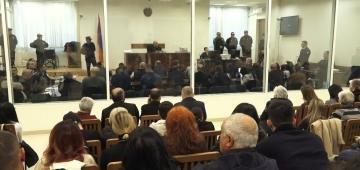 |
Defense attorneys have requested a review of the pretrial detention of Archbishop Bagrat
The defense attorneys have requested that the court allow Archbishop Bagrat to participate in the Bishops' Assembly convened by the Catholicos of All Armenians in the Armenian Apostolic Church on December 10-12. At the same time, they have offered a bail of 3,800,000 drams. The court will consider the motion to detain the archbishop on December 9 at 3:30 p.m.
|
 |
The book Love Stories in the Bible has been translated from German into Armenian
In order to get acquainted with the book “Love Stories in the Bible” published by the Armenian Bible Society and to talk about Christian and marital love, Father Markos Mangasaryan met with young people. The book was translated from German and is intended for reading by everyone, but especially for young couples or those who want to start a family. The book presents successful and unsuccessful love stories based on various biblical stories.
|
 |
Court Takes Step Back in Lidya Mantashyan Case After Outcry
Karen Farkhoyan, based on the testimony of the prosecution and defense, replaced Lidya Mantashyan's pretrial detention with a combined alternative measure of detention: a 2.5 million dram bail and administrative supervision. Earlier, on November 20, the court extended Lidya Mantashyan's detention for 3 months, after which various individuals staged a 4-day sit-in in front of the Prosecutor General's Office, demanding Lidya's release.
|
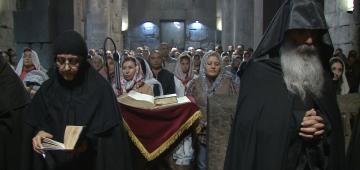 |
Prayers for imprisoned spiritual fathers and prisoners held at the Holy Cross Church in Aparan
Every Thursday, during the services held in various churches of the diocese, priests and believers express their spiritual support and pray for the Primate of the diocese, Bishop Mkrtich Proshyan, all imprisoned spiritual fathers, and Armenians held in prison for defending the church and the homeland.
|
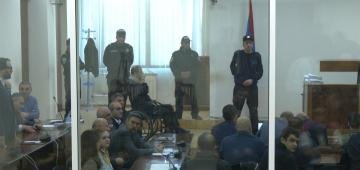 |
The court has extended the detention of Lidya Mantashyan, the only woman in the Sacred Struggle caseIn addition to Lidya Mantashyan, the court extended the detention of Movses Sharbatyan for 3 months. At the same time, the court mitigated the preventive measures of other citizens involved in the case: detention to house arrest, house arrest with a ban on absence. On the day of the hearing, supporters of the Sacred Struggle held a demonstration in front of the Prosecutor General's Office. Chanting "Freedom to the Just," they walked from the Prosecutor General's Office to the court. |
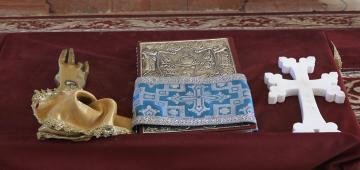 |
The Armenian Apostolic Church celebrated the three-year anniversary of the Presentation of the Holy Virgin to the TempleWith the blessing of Archbishop Mikayel Ajapahyan, Primate of the Shirak Diocese, November 21 was also designated as the feast day of the Holy Mother of God Church in Maralik. The relic-bearing right of John the Baptist was transferred from the Seven Wounds Church in Gyumri and a festive liturgy of the feast was served. The holiday got its name from an episode in the childhood of the Virgin Mary, when her parents, Hovakim and Anna, presented the three-year-old Mary to the Temple in Jerusalem. |
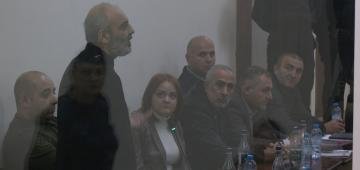 |
Archbishop Bagrat demanded the resignation of the head of the Investigative CommitteeAt the court hearing on the Holy Struggle case, Archbishop Bagrat referred to the statement made by the head of the Investigative Committee in parliament that there was a terrorist plan allegedly written by his hand. Archbishop Bagrat officially stated that there was no such plan and demanded that the head of the Investigative Committee answer, but if there is no such thing, he should be removed from office and convicted of slander. |
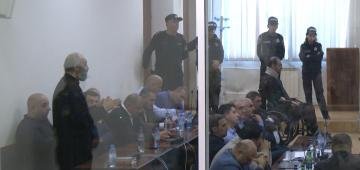 |
No proceedings have yet been initiated for the dissemination of the recording published in the Holy Struggle caseThe defenders in the Holy Struggle case, citing the provisions of the European Convention on Human Rights, claim that this criminal proceeding pursues a political goal. Archbishop Bagrat reminded the court that about two months ago he made a public statement from the court that there are distortions of events, words, and events in the Holy Struggle proceedings, and no legal process has been initiated regarding these statements of his to date. |
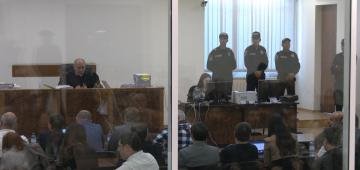 |
The probation service did not return calls to have the defendant transported to the hospitalThe health condition of Aghvan Arshakyan, the defendant in the "Holy Struggle" case, has worsened, he has been experiencing pain in his head. The ambulance service arrived and offered to take Arshakyan to the hospital, but Arshakyan's family was unable to establish telephone contact with the probation service. After the break, Arshakyan appeared in court. Due to his health condition, the court had earlier replaced Aghvan Arshakyan's prison detention with house arrest. |
 |
Artashat Festival and the Feast Day of St. John the Baptist ChurchOn October 19, the feast day and the 10th anniversary of the consecration of the St. John the Evangelist Church in Artashat were celebrated. On that day, the Armenian Apostolic Church also celebrates the feast of the Evangelists: St. Matthew, Mark, Luke, and John. The relic of St. Luke the Evangelist was brought to the church from Holy Etchmiadzin. |
